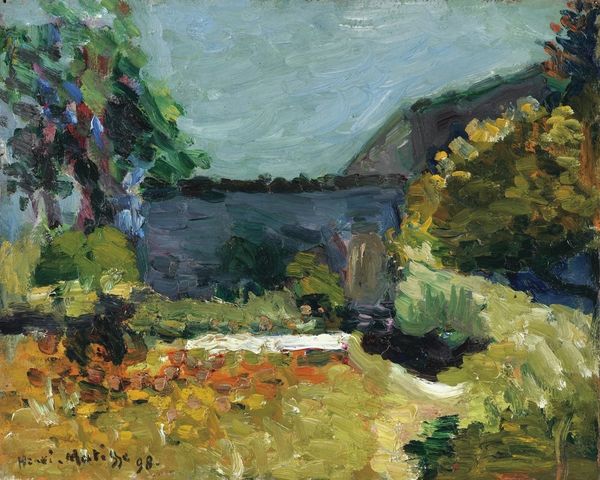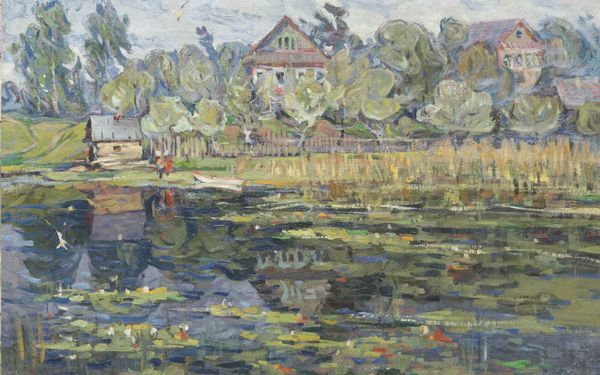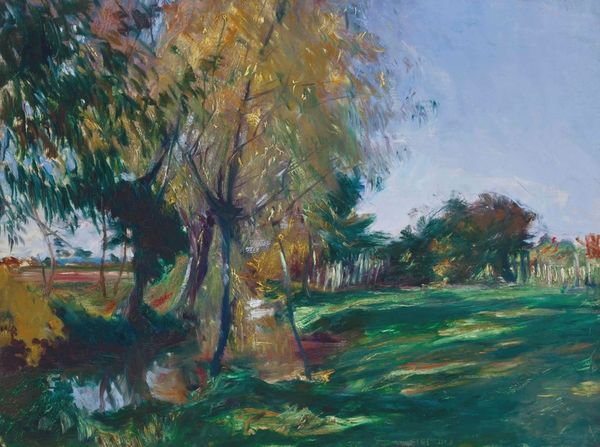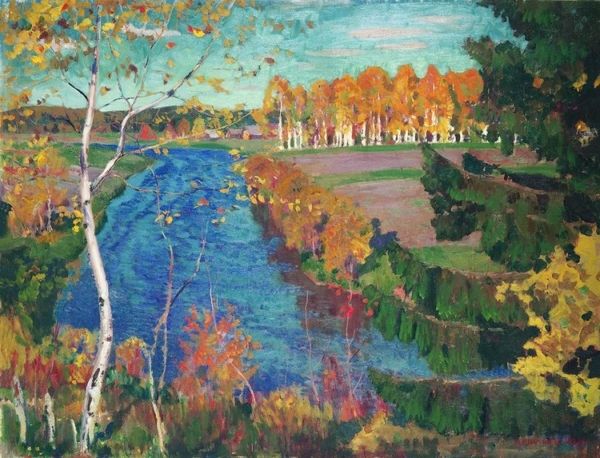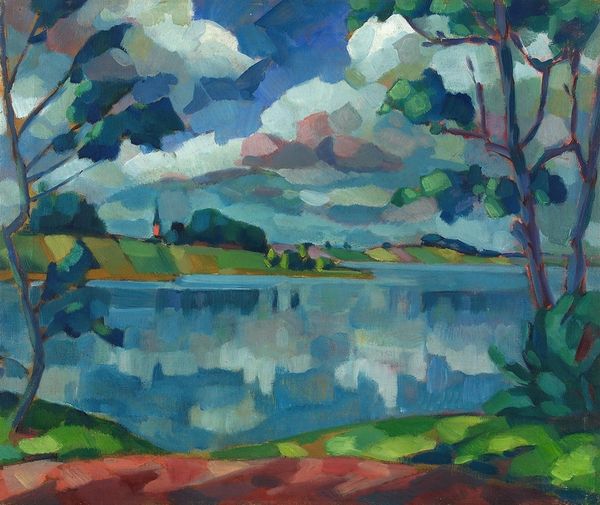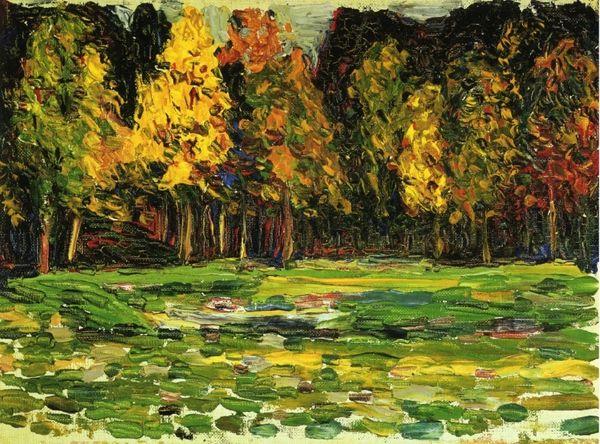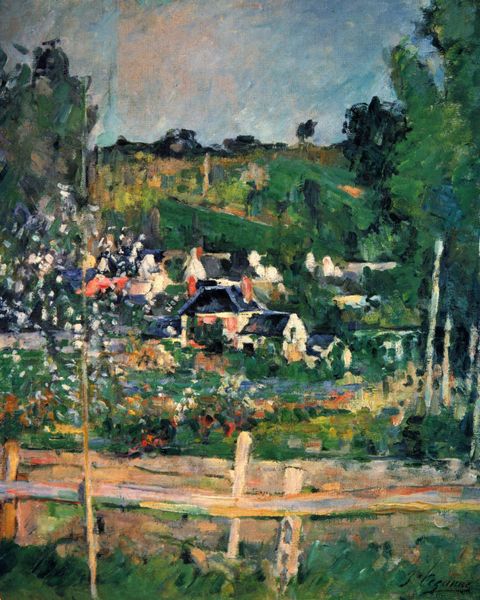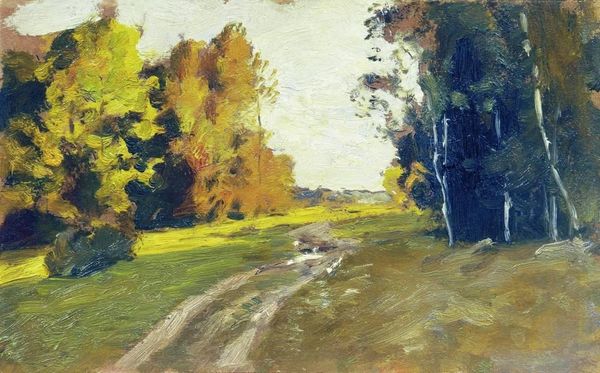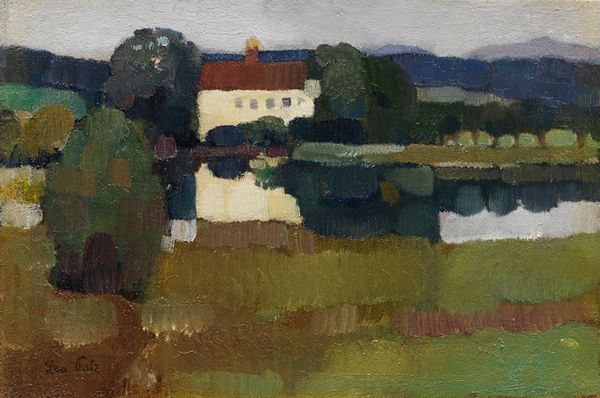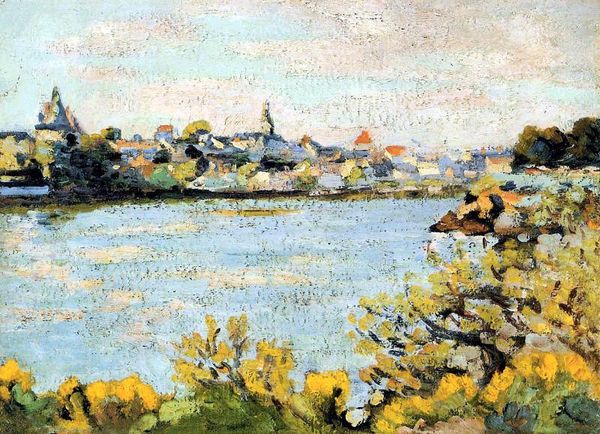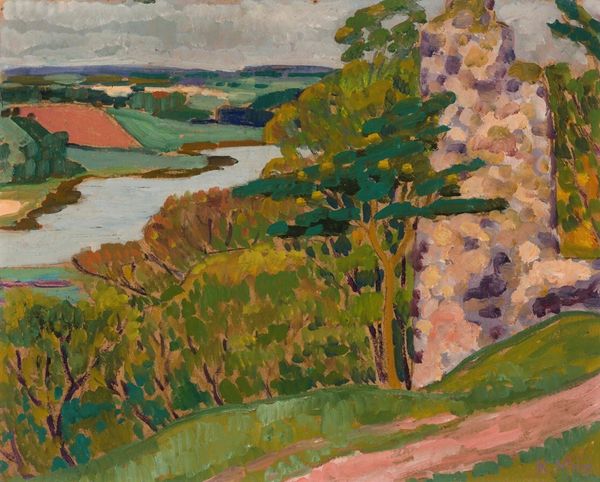
Copyright: Public Domain: Artvee
Curator: Oh, isn't that lovely? At first glance, I feel a gentle stillness wash over me. It's muted, dreamlike... the colors bleed into each other so beautifully. Editor: Yes, it’s intriguing, though I'm less struck by tranquility and more by its tension. Wassily Kandinsky created this oil on canvas work titled "Sketch for Akhtyrka – Fall" around 1901, so it represents an earlier, perhaps less explored phase in his oeuvre. I feel a sort of anxiety brewing beneath that surface serenity. Curator: Anxiousness? Really? I can see the faintest echo of unease now that you mention it. Perhaps it’s the way the colours reflect on the water - a slightly muddied quality there. I'm so drawn to that solitary red dot though—what do you make of it? It anchors my eye completely. Editor: That singular dash of crimson certainly provokes inquiry. Perhaps it is a lone figure, marginalized and displaced, rendered in bold contrast. Kandinsky himself experienced societal displacement as a Russian émigré in Germany; such biographical details undoubtedly permeate into his works of this period. His exploration of Russian folk art further contributes a layer of national and personal identity negotiations. Curator: You know, thinking about that little splash of red, it could also represent something utterly joyful - maybe a flower, a hat. What delights me most is the impression of memory unfolding before me, blurred edges and gentle whispers. Editor: Absolutely, interpretation always resides in that liminal space of intersectionality and lived experiences. One person’s joy, after all, is another’s potential site of struggle. This landscape is a dialogue. And to fully appreciate that, we need to consider the shifting geopolitics of the turn of the century alongside personal trauma. It also seems worth mentioning how revolutionary it was at the time to even suggest that art might aim toward complete abstraction! This early landscape hints toward Kandinsky’s later explorations, and for me, invites an analysis of what exactly he thought he was emancipating through abstraction. Curator: It's like peeking into a half-remembered dream, isn't it? Leaving a taste of both melancholy and peace... almost paradoxical. Editor: Precisely; Kandinsky delivers both solace and discomfort—a dialectic of emotional encounters—all within this tiny oil sketch from the turn of the century. It's unsettling and moving at the same time.
Comments
No comments
Be the first to comment and join the conversation on the ultimate creative platform.
